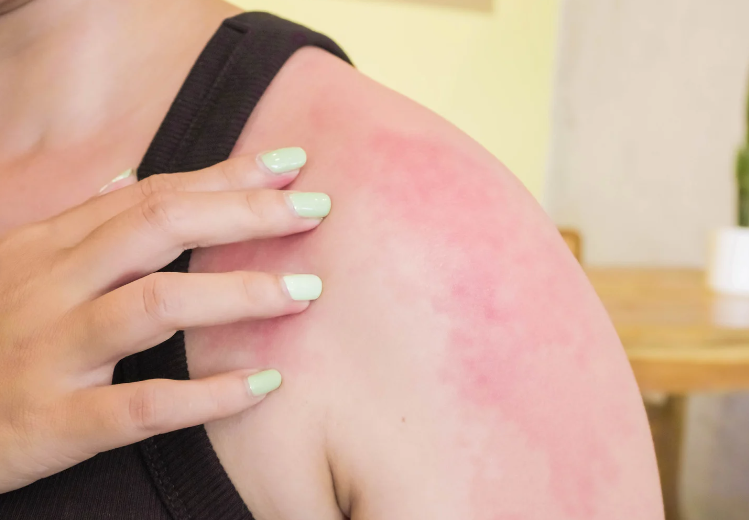Health Conditions
How to Safeguard Your Skin from Cancer
Skin cancer is a serious and potentially fatal disease that affects millions of people worldwide. It occurs when abnormal cells in the skin grow uncontrollably, forming malignant tumors.
Skin cancer prevention is paramount, considering its prevalence and potentially severe consequences. While some risk factors like genetics and skin type are beyond our control, several proactive measures can significantly reduce the likelihood of developing this condition.
From adopting sun-safe habits to regular skin examinations and avoiding tanning beds, various strategies exist to minimize sun damage and lower the risk of skin cancer. In this article, we explore practical and evidence-based approaches to prevent skin cancer, empowering individuals to safeguard their skin health and minimize their risk of developing this potentially life-threatening disease.
By prioritizing prevention and embracing sun-protective behaviors, we can strive for a future with fewer cases of skin cancer and healthier, happier lives. Let’s delve into the effective ways to shield ourselves from the sun’s harmful rays and reduce the incidence of skin cancer.
There are three main types of skin cancer: basal cell carcinoma, squamous cell carcinoma, and melanoma. Basal cell carcinoma and squamous cell carcinoma are the most common types, while melanoma is less common but more aggressive.

The Importance of Prevention
Preventing skin cancer is critical. By taking proactive efforts to protect your skin, you can greatly lower your chances of having this hazardous condition. Skin cancer is essentially preventable, with up to 90% of instances caused by sun-induced ultraviolet (UV) radiation exposure.
Skin Cancer Risk Factors
Certain factors can increase your risk of developing skin cancer. These include:
- Sun Exposure: Prolonged UV radiation from the sun is the leading cause of skin cancer. The longer you remain in the sun, particularly without protection, the greater your risk.
- Fair Skin: People with pale skin, light-colored hair, and blue or green eyes are more likely to get skin cancer because they have less melanin, which acts as a natural sun protection.
- Family History: If a close blood family has developed skin cancer, you may be at a higher risk.
- Moles or Precancerous Skin Lesions: Having a large number of moles or specific types of precancerous skin lesions increases your risk.
- Weakened Immune System: Individuals with a weaker immune system, such as those with HIV/AIDS or who have received organ transplants, are more likely to acquire skin cancer.
Sun Safety Tips
Protecting your skin from the sun is essential for preventing skin cancer. Here are some sun safety tips to keep in mind:
- Wear Sunscreen: Apply sunscreen with an SPF of 30 or higher to all exposed skin, even on cloudy days. Reapply every two hours, or more often if you are sweating or swimming.
- Seek Shade: When possible, seek shade during peak sunlight hours, which are normally between 10 a.m. and 4 p.m. This is when the sun’s rays are most powerful and harmful.
- Wear Protective Clothing: Cover your skin with clothing like wide-brimmed hats, long-sleeved shirts, and slacks. Look for clothing with a tight weave that offers more sun protection.
- Wear Sunglasses: To protect your eyes from the sun’s harmful rays, wear sunglasses that block both UVA and UVB radiation.
- Avoid Tanning Beds: Indoor tanning beds release hazardous UV radiation, increasing your chances of acquiring skin cancer.

Using Sunscreen Effectively
Sunscreen is a crucial tool in preventing skin cancer, but it’s important to use it correctly for maximum effectiveness. Here are some tips for using sunscreen effectively:
- Choose the Right SPF: Use a sunscreen with an SPF of 30 or higher. SPF represents the level of protection against UVB rays, which are the primary cause of sunburn and play an important part in skin cancer development.
- Apply Generously: Apply sunscreen liberally to all exposed skin, including the face, neck, ears, and hands. Don’t forget about regions that are sometimes disregarded, such the back of your neck and the tips of your feet.
- Reapply Sunscreen: Apply sunscreen every two hours, or more frequently if you sweat or swim. Even water-resistant sunscreen can fade off, so it’s important to reapply frequently.
- Check Expiration Dates: Sunscreen loses effectiveness over time, so check the date before using it. If the bottle has expired, replace it with a new one.
- Use Additional Protection: Sunscreen should be used in conjunction with other forms of UV protection, such as seeking shade, wearing protective clothes, and using sunglasses.
The Role of Clothing in Sun Protection
In addition to sunscreen, clothing can provide an extra layer of protection against the sun’s harmful rays. Here’s how to make the most of your clothing for sun protection:
- Wear Wide-Brimmed Hats: A wide-brimmed hat will protect your face, neck, and ears from the sun. For the best protection, wear hats with at least a three-inch brim.
- Choose Sun-Protective Clothing: Look for sun-protective fabrics with a UPF (Ultraviolet Protection Factor) rating. UPF determines how well a fabric blocks UV light. The higher the UPF, the more effective the protection.
- Cover Exposed flesh: Use lightweight, long-sleeved shirts and slacks to cover as much flesh as possible. Dark-colored clothing with a tight weave offers greater sun protection than light-colored or loosely woven materials.

Seeking Shade and Avoiding Peak Sun Hours
Seeking shade and avoiding the sun during peak hours can significantly reduce your exposure to harmful UV rays. Here’s how to make the most of shade for sun protection:
- Find Natural shelter: When spending time outdoors, look for shelter under trees, umbrellas, or other structures that can protect you from the sun.
- Create Your Shade: If natural shade is not available, bring your own shade in the form of umbrellas, sunshades, or canopies.
- Plan Outdoor Activities Wisely: Whenever possible, arrange outdoor activities in the morning or late afternoon to avoid the peak sun hours of 10 a.m. to 4 p.m.
Regular Skin Checks and Early Detection
Regular skin checks and early detection are vital for catching skin cancer in its early stages when it’s most treatable. Here are some tips for performing self-examinations and what to watch out for:
- Perform Regular Skin Self-Exams: Once a month, examine your skin from head to toe. Look for changes in moles, freckles, or other skin areas, such as new growths, changes in size, shape, or color, or sores that won’t heal.
- Keep Track of Moles: Monitor any existing moles for changes in size, color, or shape. Also, take attention to any moles that become itchy, painful, or bleed.
- Consult a Dermatologist: If you observe any unusual changes on your skin or are concerned about skin cancer, see a dermatologist for a thorough examination and guidance.

The Benefits of a Healthy Lifestyle in Preventing Skin Cancer
Maintaining a healthy lifestyle can play a significant role in preventing skin cancer. Here are some ways to promote overall health and reduce your risk:
- Eat a Balanced Diet: A balanced diet includes a mix of fruits, vegetables, healthy grains, and lean proteins. Berries and leafy greens are high in antioxidants, which may help protect your skin from UV radiation damage.
- Maintain Hydration: Drink plenty of water to keep your skin hydrated and healthy.
- Don’t Smoke: Smoking not only raises your risk of lung cancer, but it also causes premature skin aging and makes you more susceptible to skin cancer.
- Exercise Regularly: Regular physical activity promotes general health and strengthens the immune system.
- Manage Stress: Chronic stress can impair your immune system, increasing your susceptibility to a variety of diseases, including skin cancer. Find healthy stress-management strategies, such as exercise, meditation, or hobbies.
Conclusion
Preventing skin cancer begins with developing healthy habits and taking proactive measures to protect your skin from the sun’s damaging UV rays. You can reduce your risk of acquiring this potentially fatal disease by constantly using sunscreen, seeking shade, wearing protective clothes, and monitoring your skin on a frequent basis.
Furthermore, living a healthy lifestyle helps boost your body’s natural defense mechanisms. Remember, prevention is essential, so begin applying these techniques immediately and encourage your loved ones to do the same. Together, we can lower the risk of skin cancer and enjoy the outdoors with confidence.
Trusted Health, Wellness, and Medical advice for your well-being



